Attract a Prothonotary Warbler With a Birdhouse
Updated: Apr. 20, 2022
Learn how to identify and attract a prothonotary warbler. Find out what the males and females look like, and learn about their nesting habits and habitat.
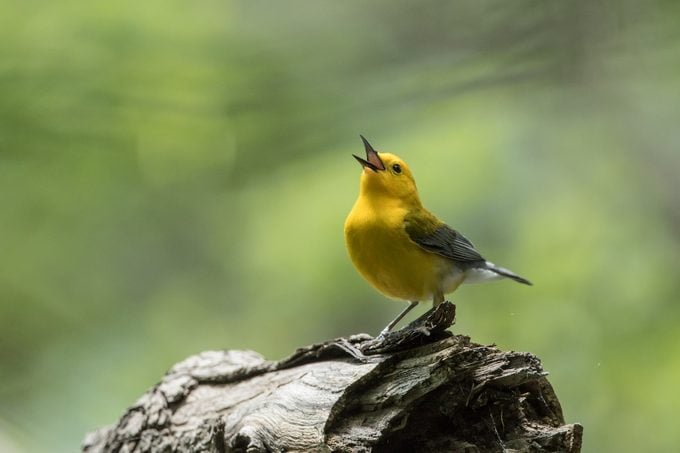
What Does a Prothonotary Warbler Look Like?
The sunny yellow prothonotary warbler has a dark eye and bill with blueish wings and white underneath the tail. Females may appear lighter in color than males. According to the Audubon Guide to North American Birds, this species’ name originally referenced a group of Catholic Church scribes who dressed in yellow hoods.
“I monitor the bluebird boxes at Mosquito Hill Nature Center near New London, Wisconsin. The boxes provide me with plenty of opportunities to find and photograph all of our feathered visitors. This male prothonotary warbler (above) was singing for a mate. I never did see a female, but his song was so lovely it should have attracted many,” says Deb Potts.
Check out 16 spring warblers you should know.
Prothonotary Warbler Nesting Habits and Habitat
Unlike other warblers, the prothonotary is a cavity nester. They nest in holes in trees instead of out in the open. Woodpeckers are known for hammering out holes, but once they leave their homemade tree houses behind, these warblers take up residence in the woodpeckers’ excavated apartments.
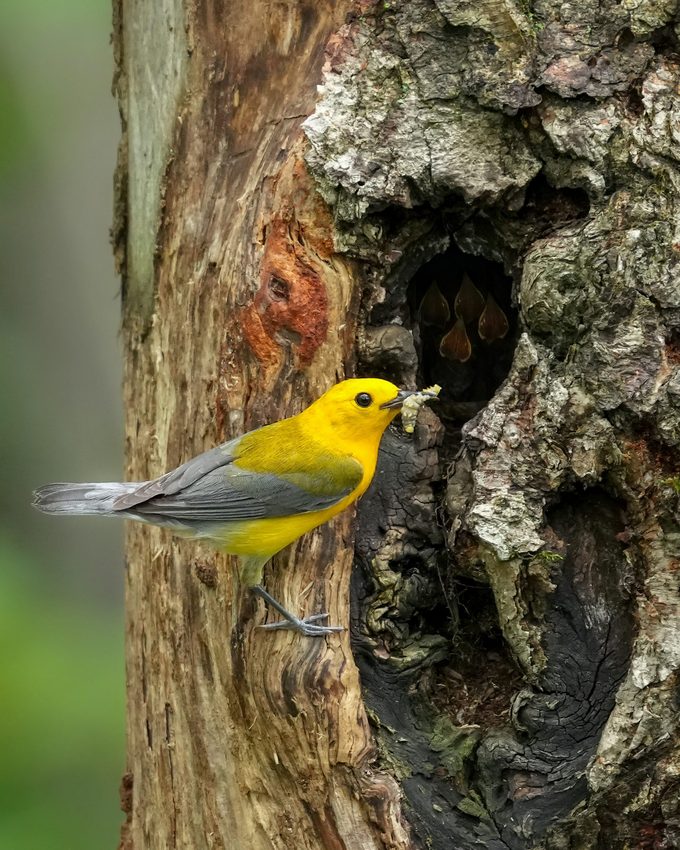
“I took this photo of a male prothonotary warbler (above) delivering food to the baby birds inside his nest. Prothonotary warblers are one of my all-time favorite birds. I was so excited to find a breeding pair of them along the Wisconsin River this past year. I could hear the excited chirps of babies inside the tree cavity. But it wasn’t until I got home later and looked at this photo I realized you could see four hungry mouths inside awaiting their parents to bring them some food! Such an amazing birding experience!” says Andy Raupp.
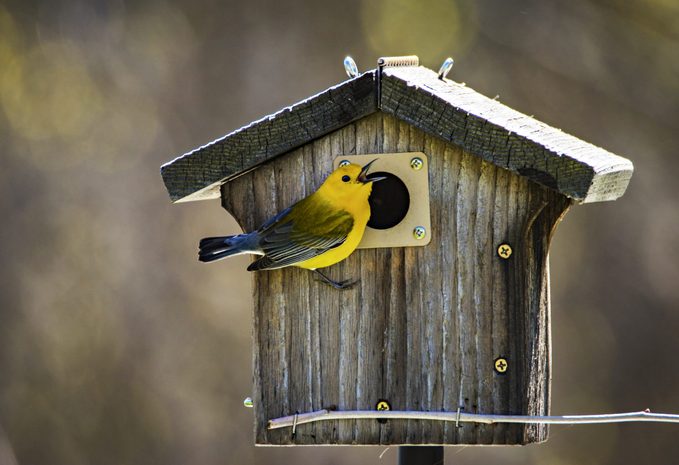
As well as in tree cavities, these stunning warblers nest in bird boxes. “Prothonotary warblers nest in areas where people can see them,” says Deloras Freeman, the visitor services manager of the Great Dismal Swamp, a national wildlife refuge in Virginia and North Carolina.
Prothonotary warblers may choose to nest in a birdhouse in your yard, especially if there are swampy woods nearby. Found in eastern swamps from central Florida to southern Minnesota, these birds use nest boxes placed 4 to 12 feet high that look out over the water. Visit Project Nestwatch for plans to make your own. During breeding season, look for these sweet-faced birds snapping their bills at intruders.
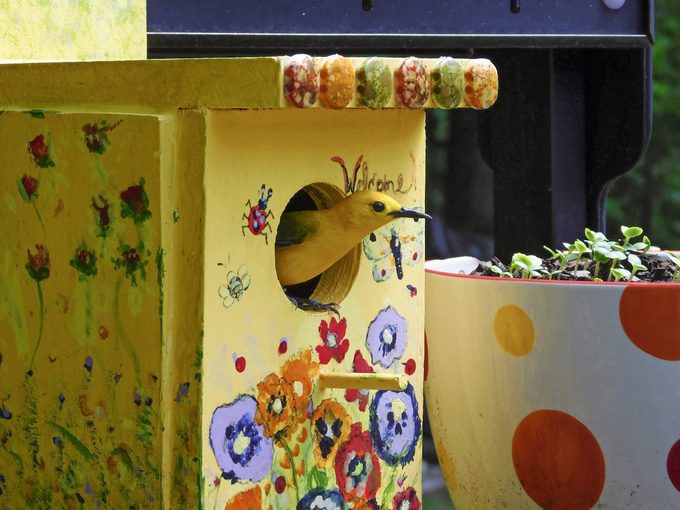
“A tenant finally moved into the birdhouse I painted a few springs ago. This prothonotary warbler (above) took a whole morning to move in, making a nest of bits of moss and dried lavender from my garden,” says Siobhan Hutchison.
Meet the yellow warblers: The sunniest spring birds.
What Do Prothonotary Warblers Eat?
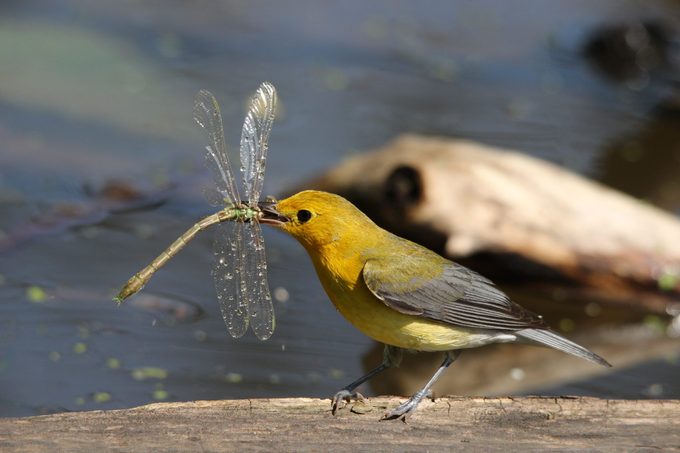
Most warblers forgo bird feeders. Make sure your yard is providing plenty of insects, the food they love most. Insects are crucial to a prothonotary warbler’s diet, and they have to eat a lot of them. From mosquitoes to aphids, these birds are natural pesticides because they consume many kinds of insects. Providing habitat for warblers in your yard not only will make your garden a more colorful place, but it will also help keep the pests away!
“I took this photo (above) in June while on Nobel’s Island along the Mississippi River in northeast Iowa, just as the female caught a large dragonfly. It was so large, she had to hesitate a moment to regain her balance. The dragonfly’s wings wings are still wet from being scooped from just above the water,” says Joanne Kline.
Learn how to identify yellow-rumped warblers.
Pictures of Prothonotary Warblers
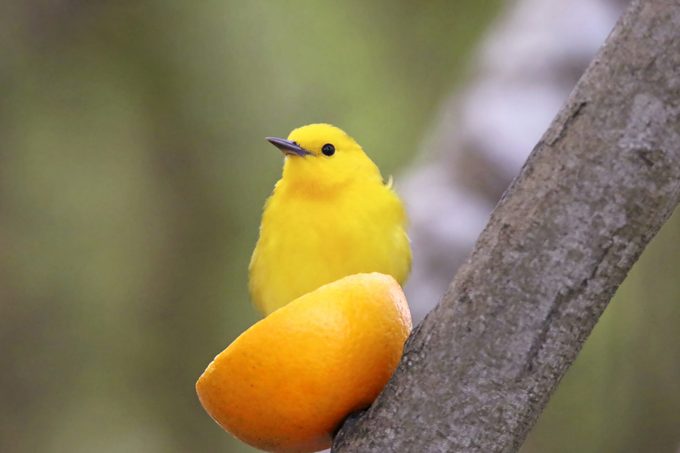
Peep Peep!
“A prothonotary warbler was the first spring migrant to arrive last year. It looks a lot like a Peeps candy marshmallow chick!” says Michelle Cano.
Discover the top warbler hotspots to visit in spring.
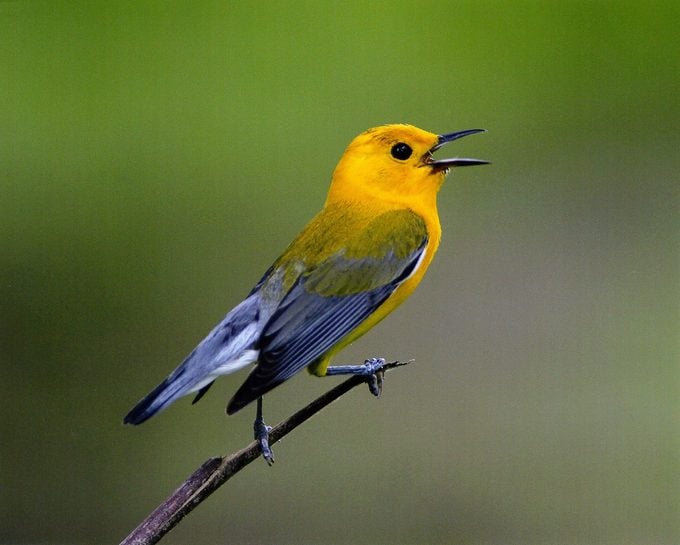
Perfect Perch
“I discovered two separate prothonotary warbler nests in a Cincinnati park and spent three weeks going back and forth between them, documenting their behavior and feedings. The image was taken the day the young fledged. This bird perched close to me and was calling to the young in the brush,” says Doug Day.
Meet the colorful Canada warbler.
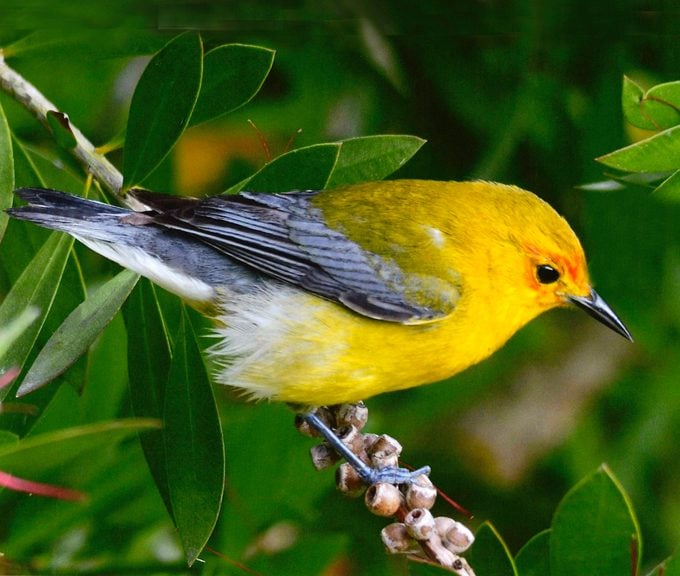
Pollen Plumage
“My wife and I vacationed on South Padre Island, Texas, during the time when migratory birds from Central and South America cross the Gulf of Mexico and ‘fall out’ onto the vegetation of the island. The birds stop to rest before they continue their flight north to the central and eastern United States. This gorgeous prothonotary warbler caught my eye, not only because of its bright yellow color but also because of the red blush on its head and throat, which is not characteristic of the species. As I photographed this bird, I determined that the red blush was from the pollen of the bottlebrush tree flowers where it had been searching for insects,” says John Thornton.
Yellow warbler vs goldfinch: Here’s how to tell the difference.
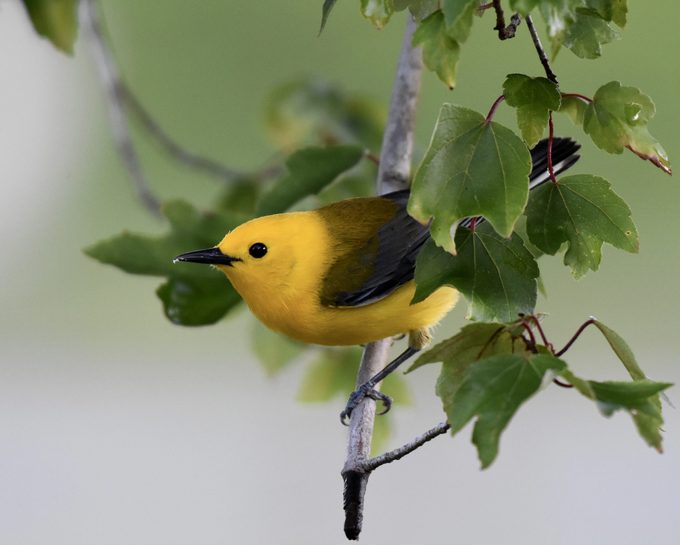
Sweet Song
“I was birdwatching at local park a few miles from my home in Florida when I heard the familiar song of a prothonotary warbler. I approached very slowly with my camera in hand hoping to get lucky enough to get a photo. One landed on the branch of a nearby maple tree. It was a magical moment to be in the company of such a beautiful little warbler and a bonus to capture the moment with my camera,” says Marie Lehmann.
Learn all about black-throated blue (and green!) warblers.
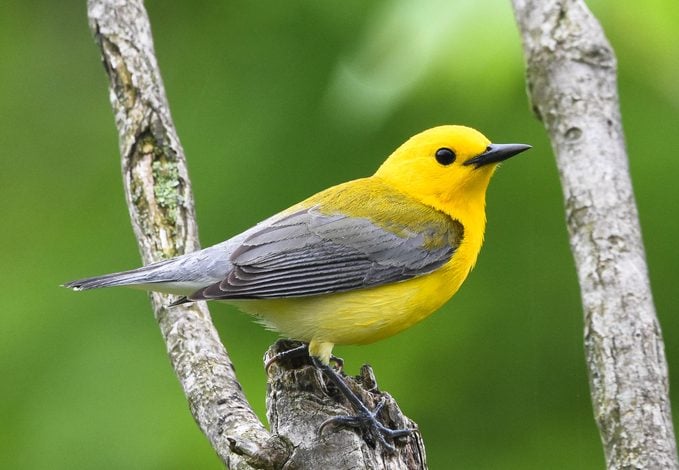
Surprising Spring Visitor
“It was a very nice surprise to have a prothonotary this spring in my county; normally I have to travel to see this bird. This is one of my favorite warblers and a record to see in my area of Ontario, Canada,” says Trisha Snider. Meet the Wilson’s warbler: The warbler that wears a hat.
Next, check out more tips for attracting warblers to your yard.




















